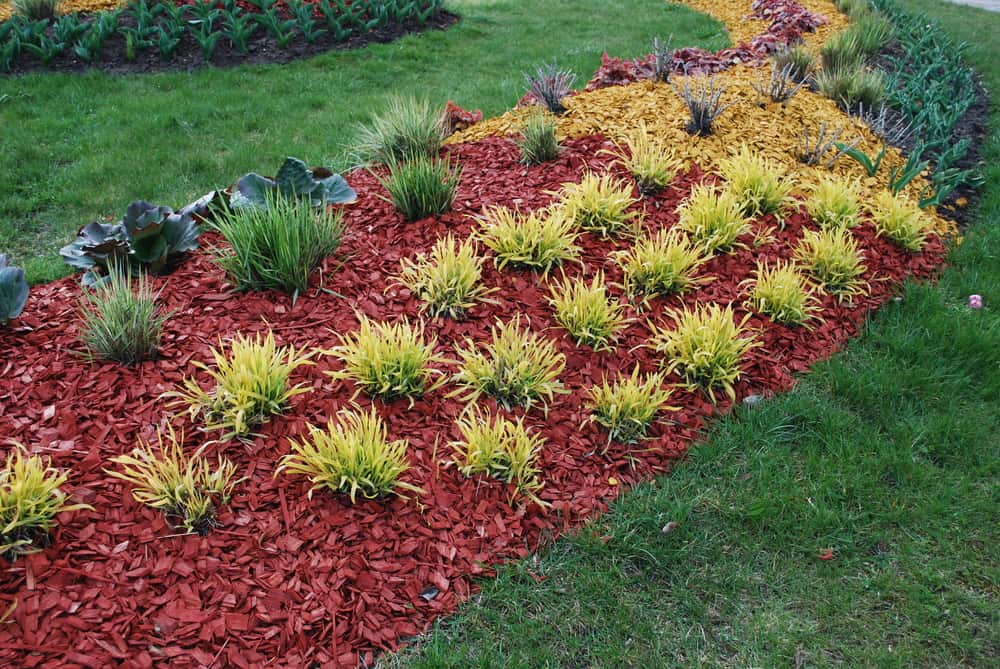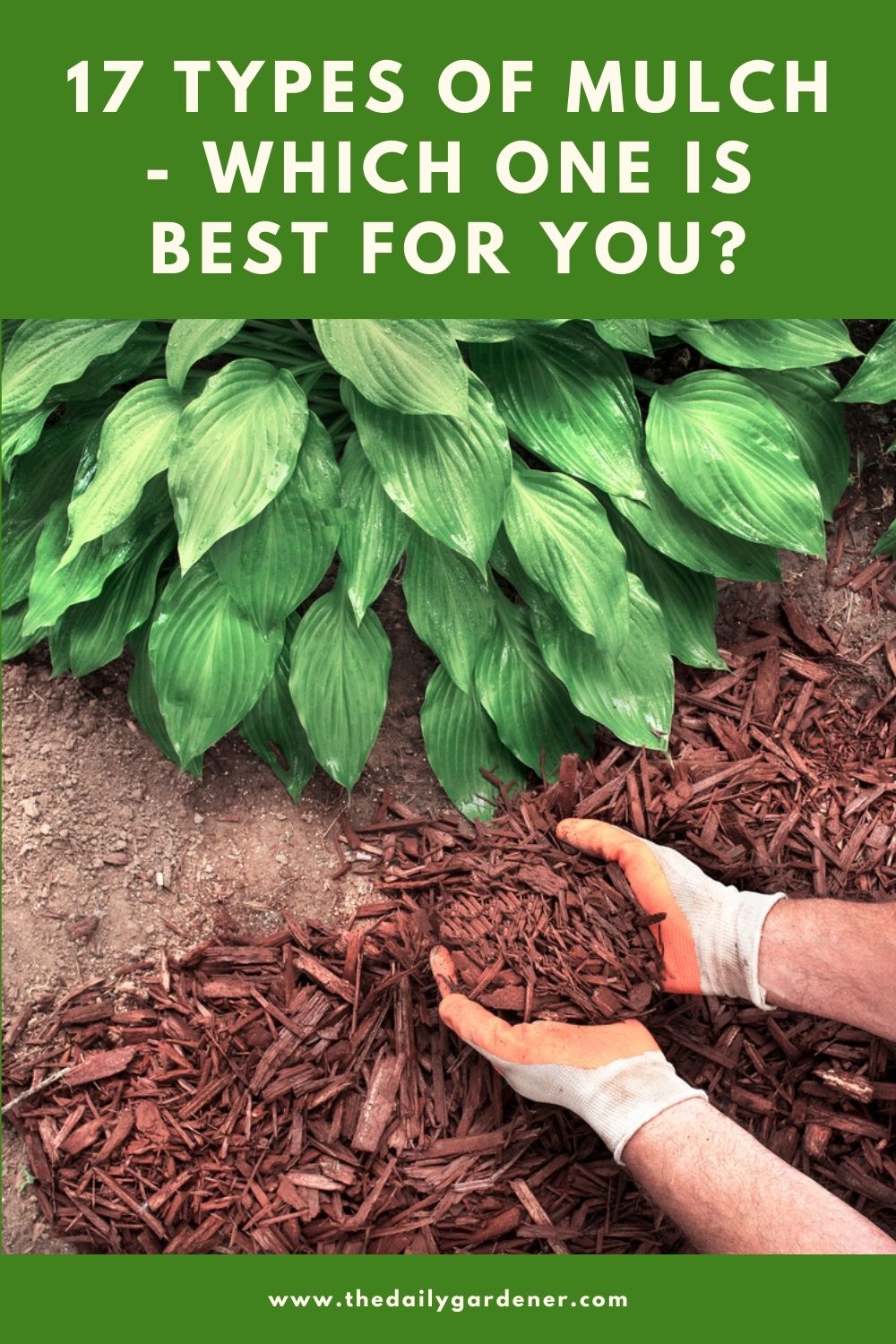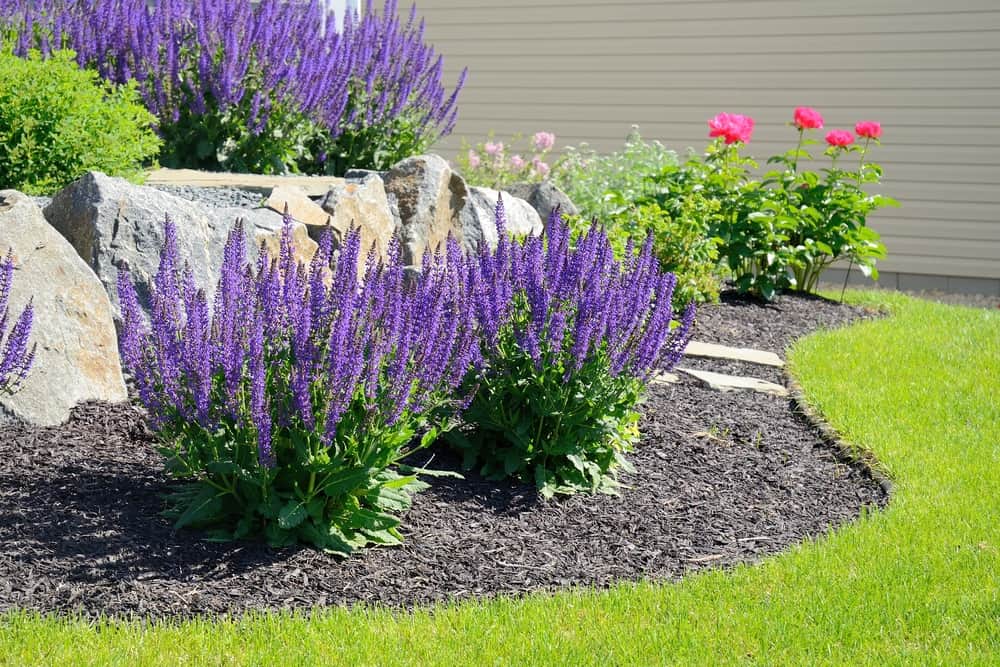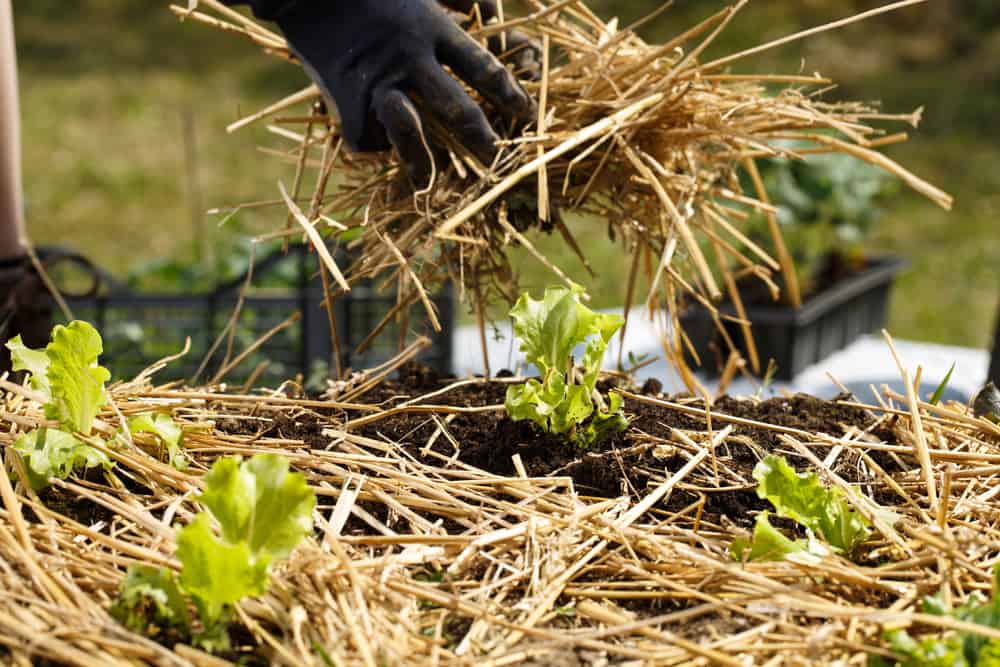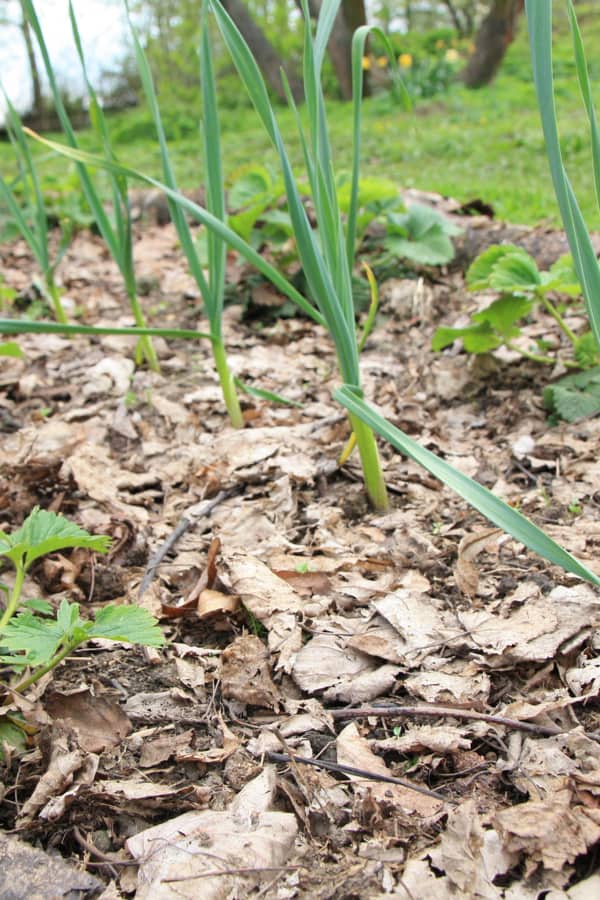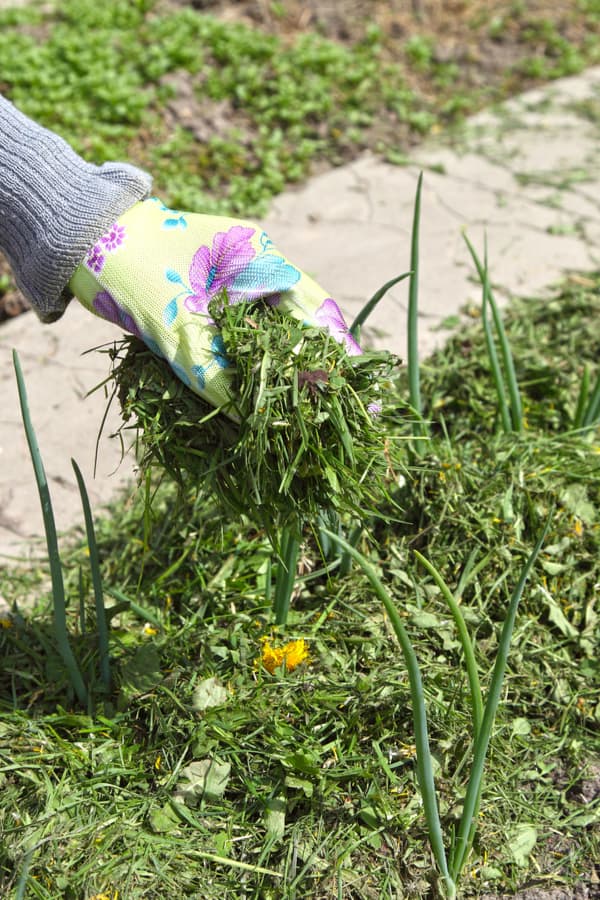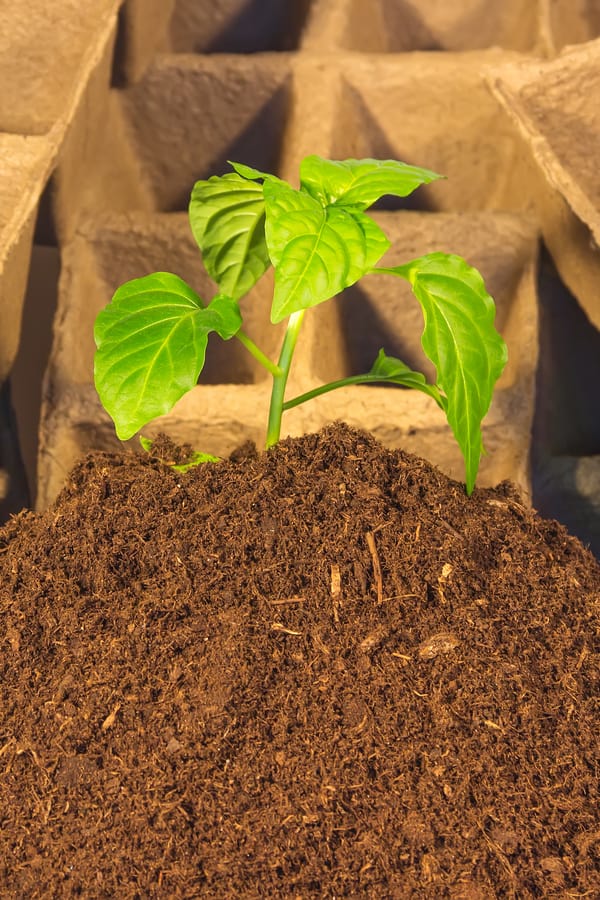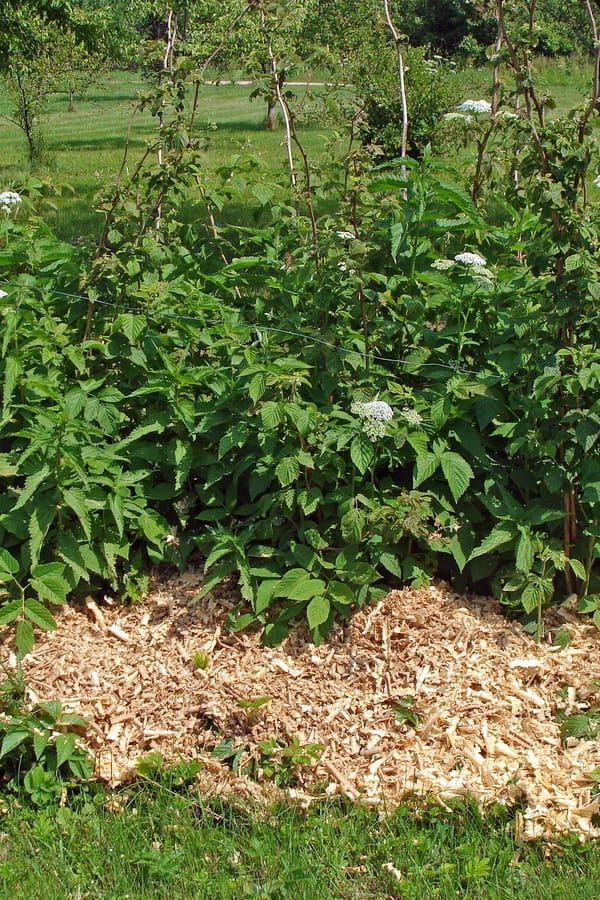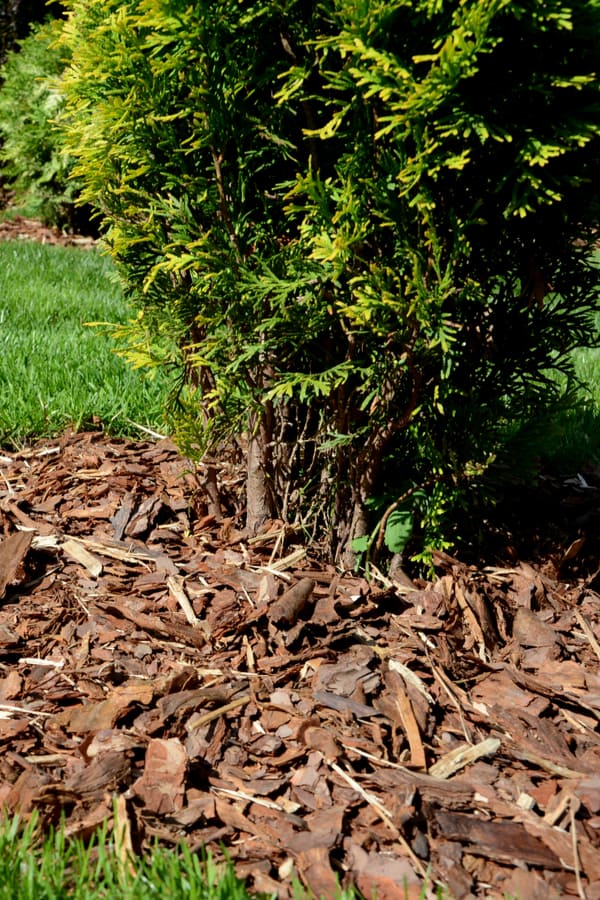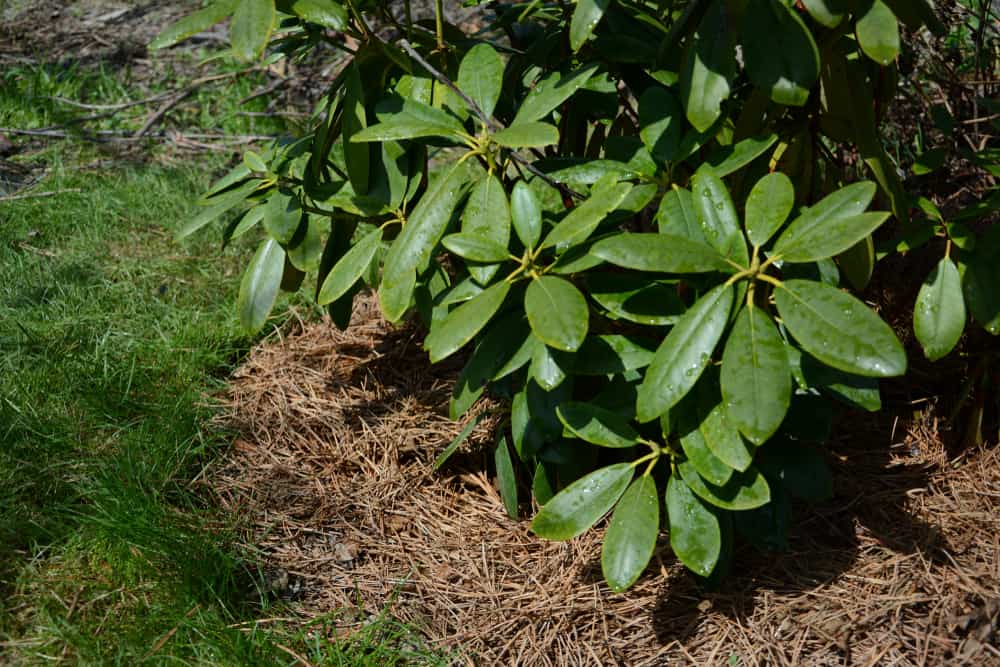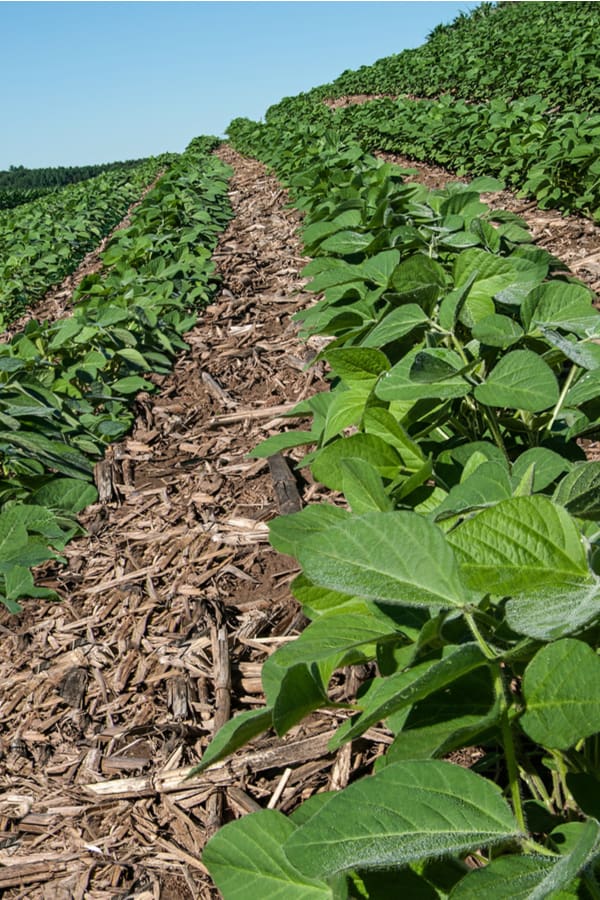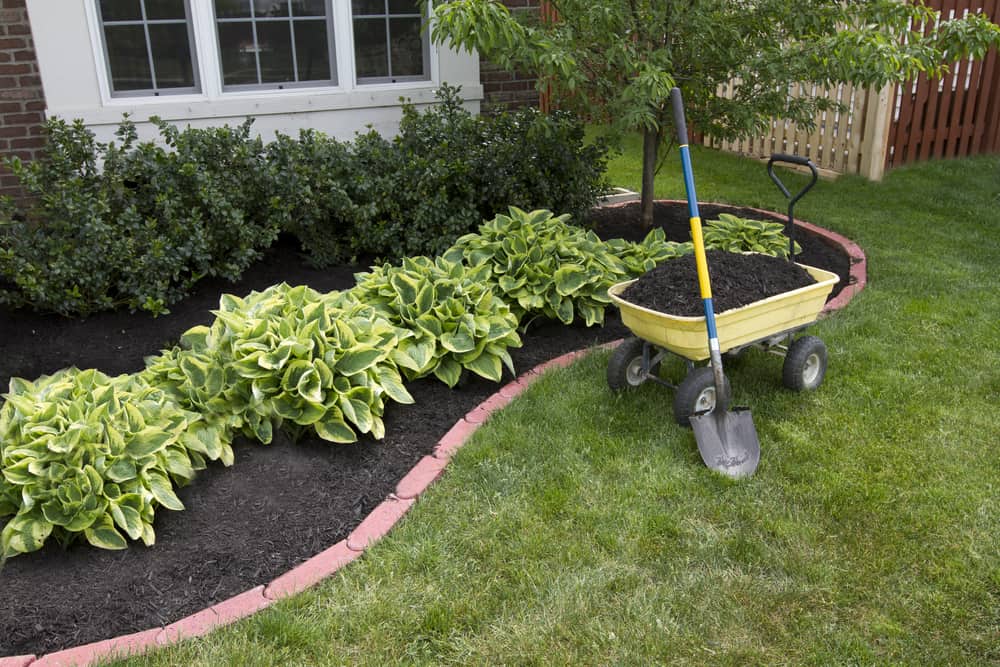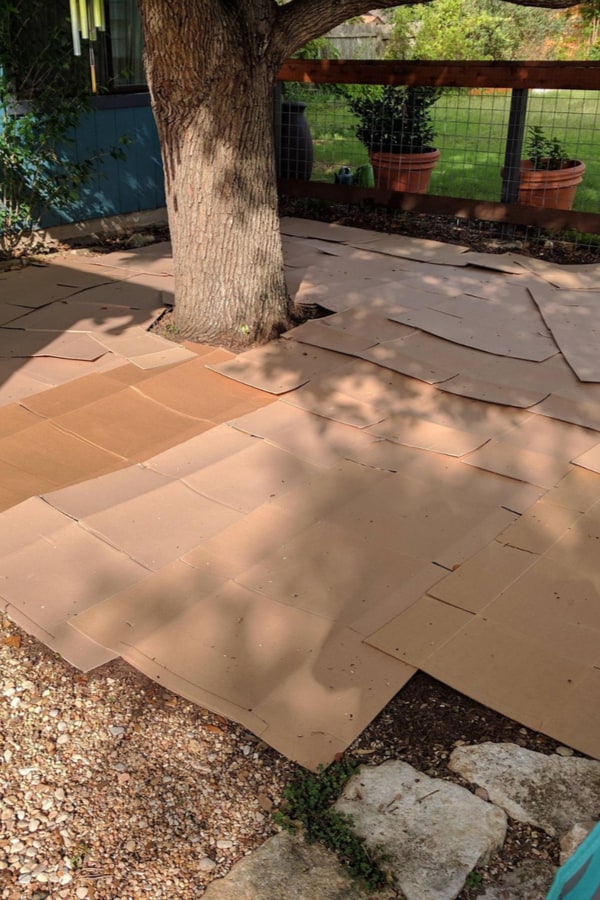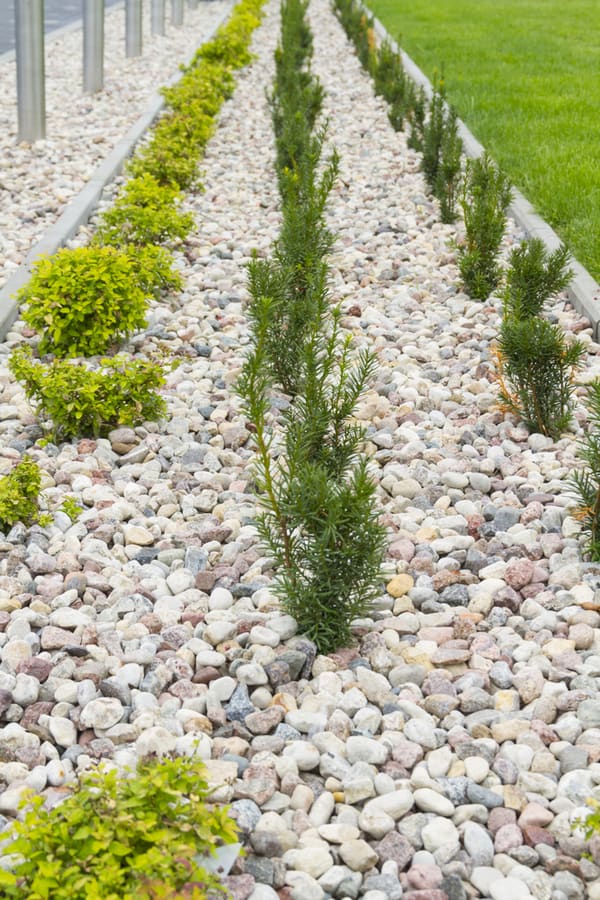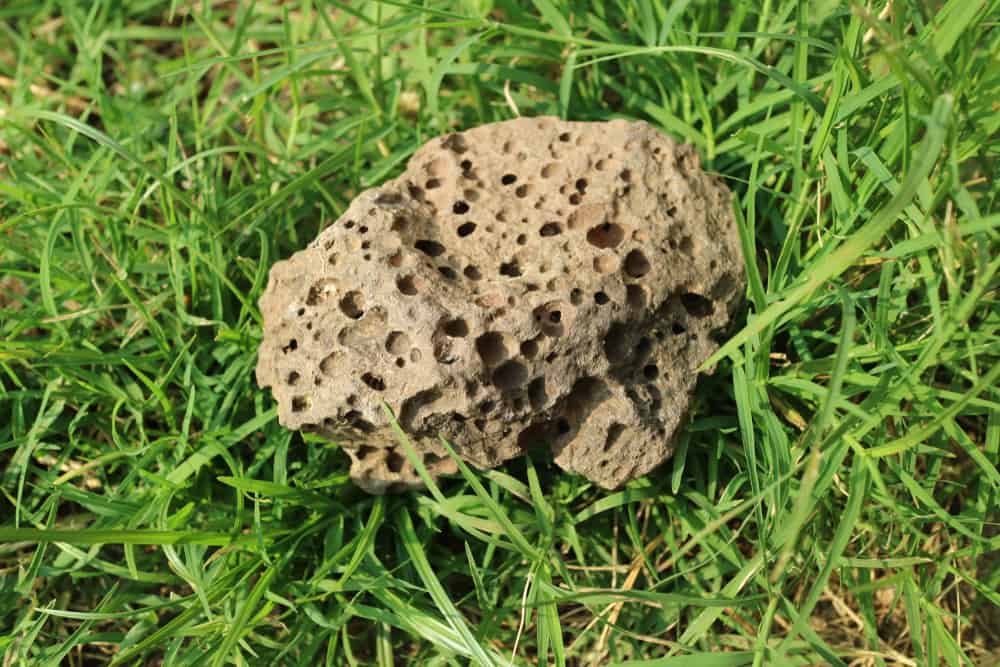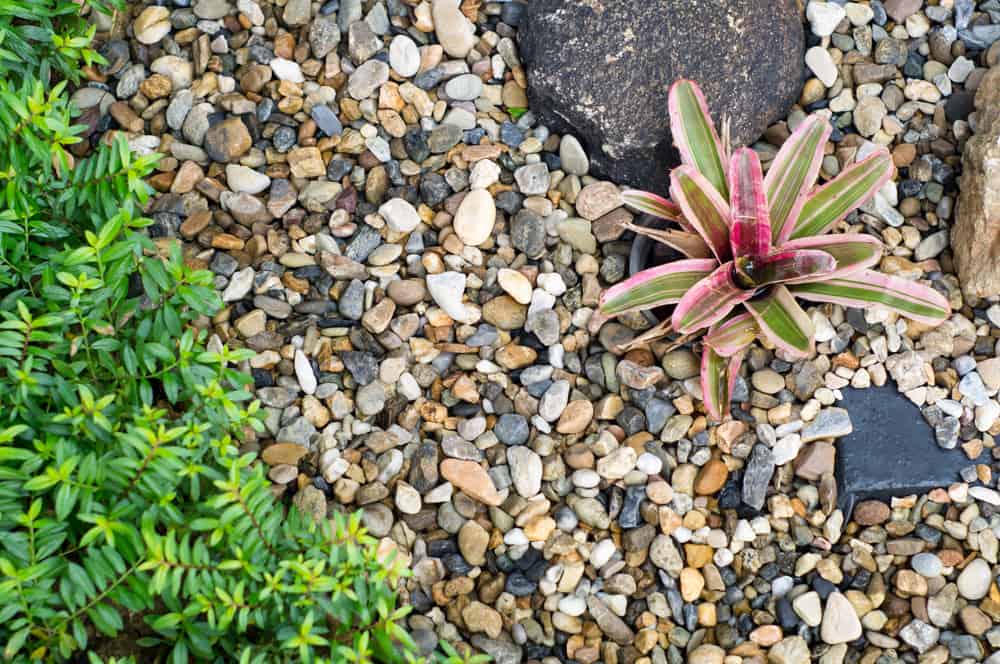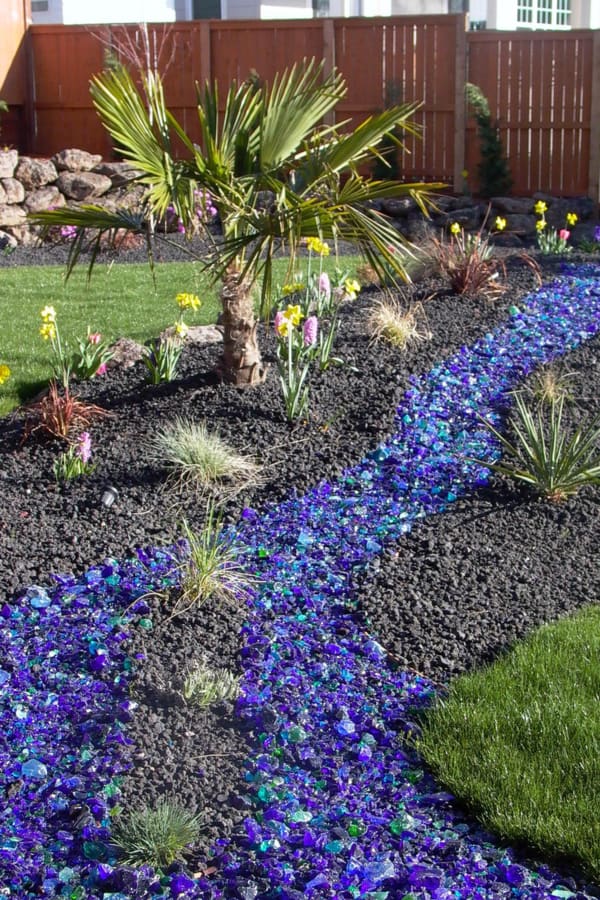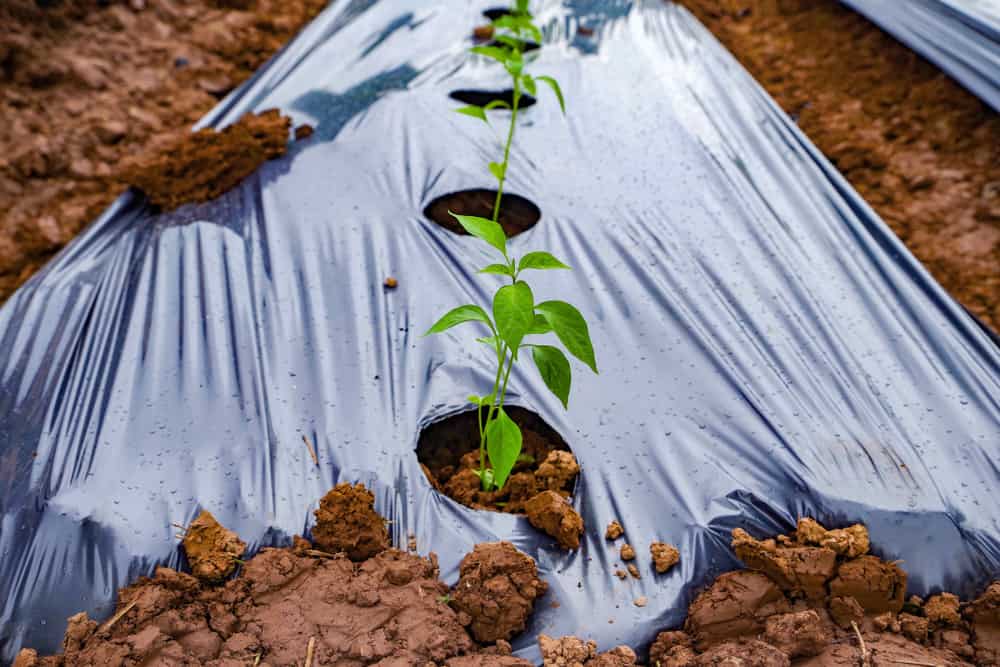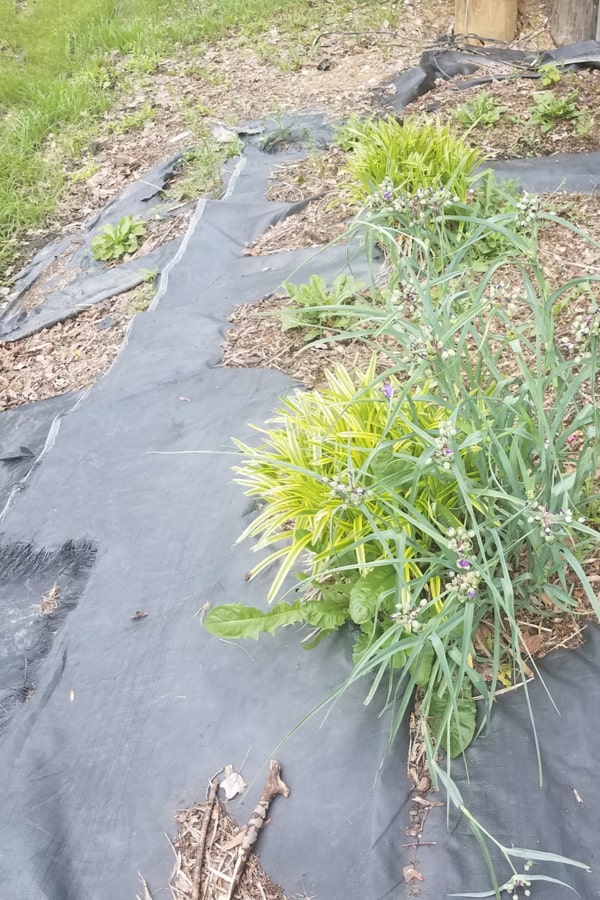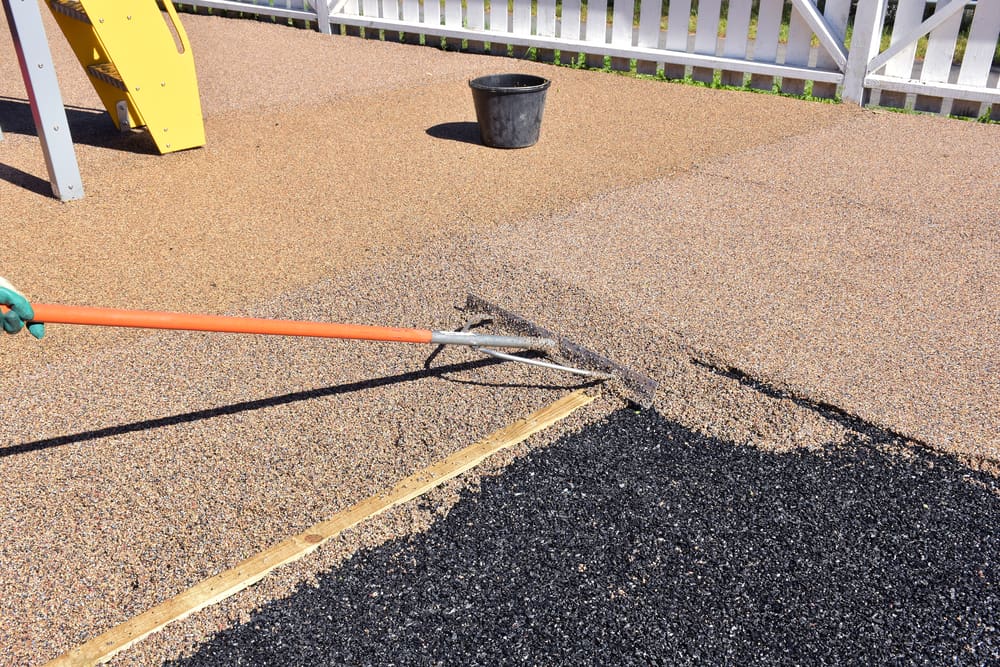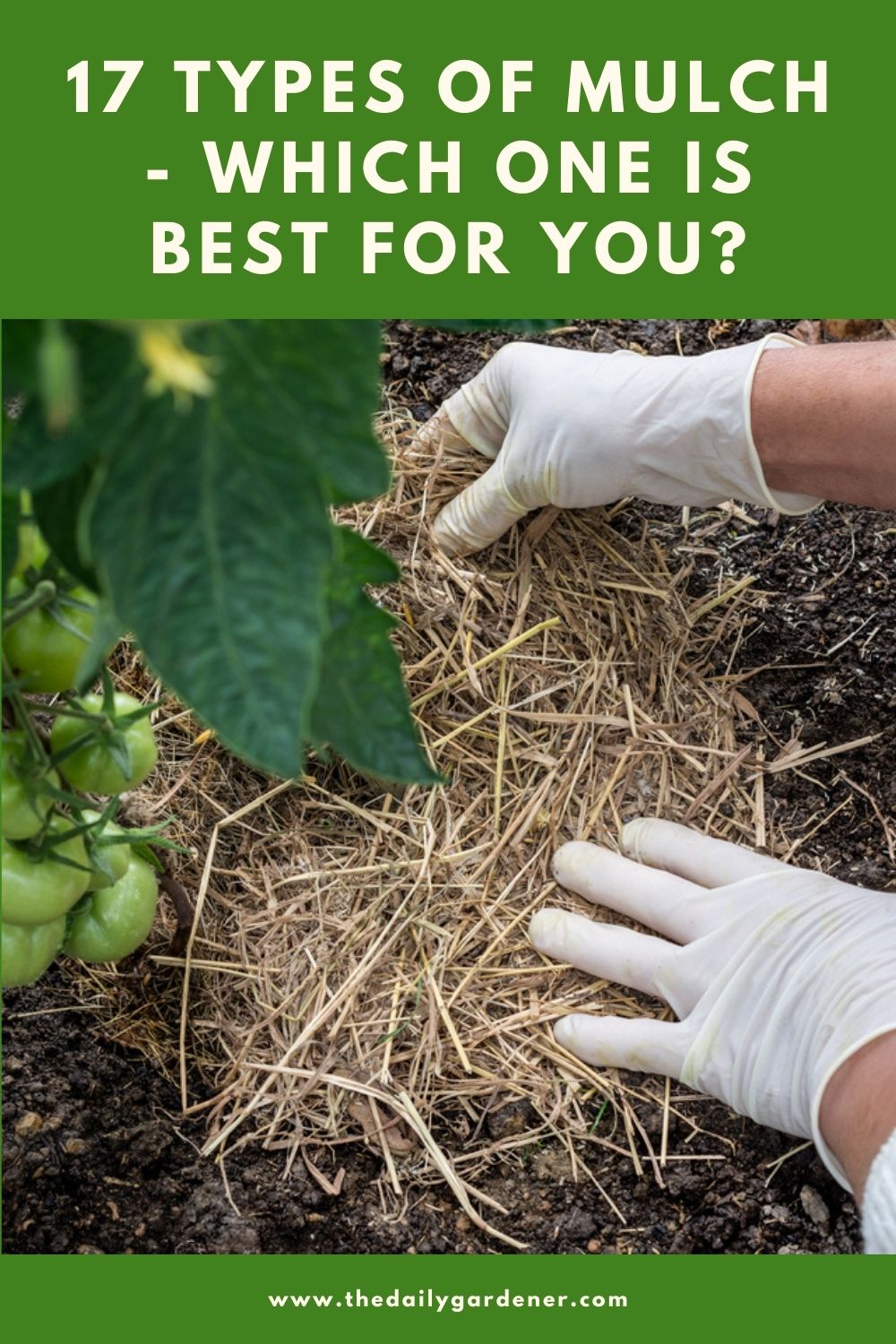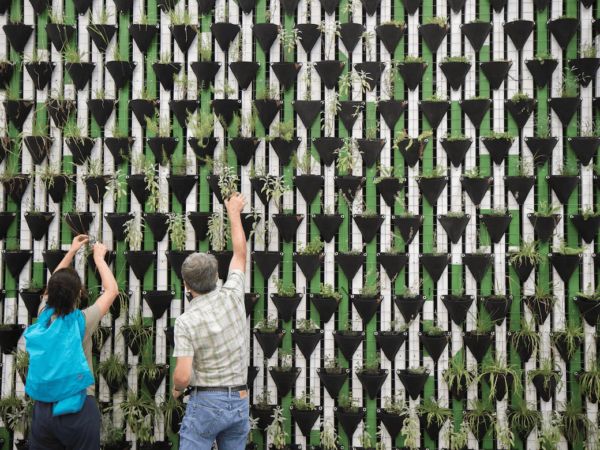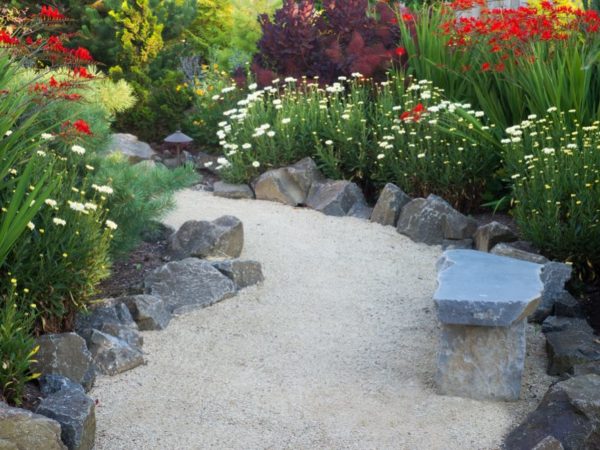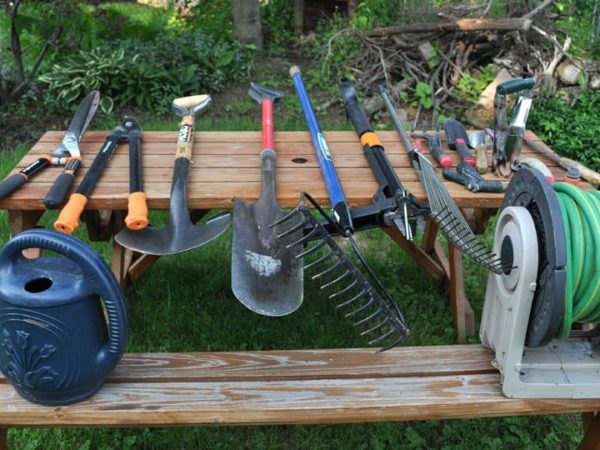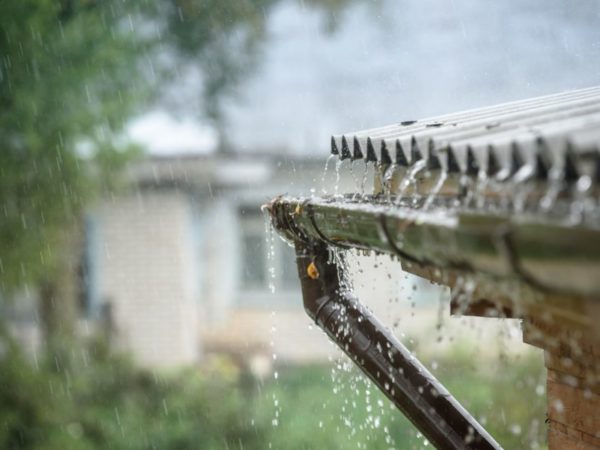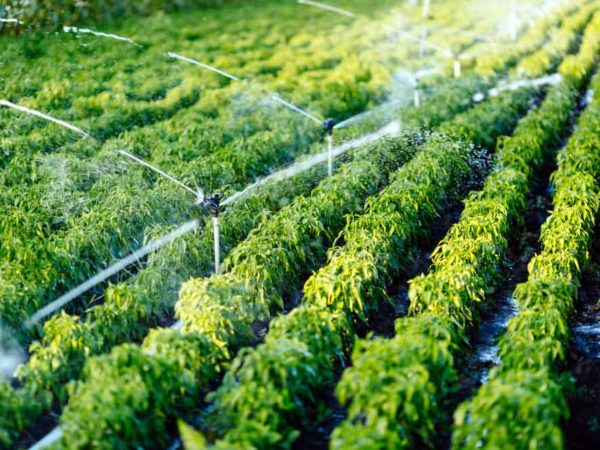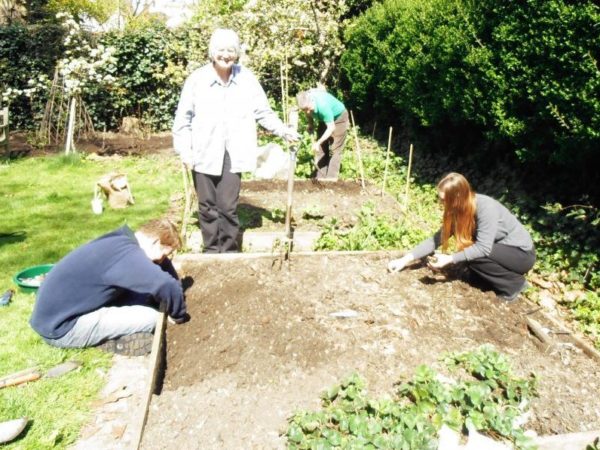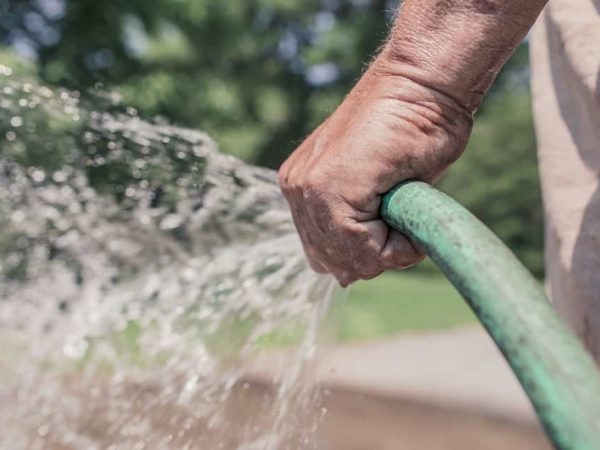Once you organize your lovely garden, you should decide which type of mulch to select to keep the soil adequately moist and your plants entirely weed-free. Moreover, an excellent covering will protect plants while trimming them or mowing the lawn, as well as keep them safe from most insects.
Basically, you can pick out organic or inorganic mulch, depending on your preferences, the type of plants you grow, and available budget. No matter what type of mulch you choose, it will define and beautify your garden or yard and make it more functional.
|
Table of Contents Types of mulch |
|
|
Organic mulch |
Inorganic mulch |
| Straw |
Stones |
|
Shredded leaves |
Pumice rocks |
| Grass clippings |
Pea gravel |
|
Wood chips and bark |
Sand |
| Cocoa bean hulls |
Landscape glass |
|
Compost |
Plastic |
| Rotted hay |
Landscape fabric |
|
Salt hay |
Carpet remnants |
| Peat moss |
Rubber |
|
Pine needles |
|
| Corn cobs |
|
|
Cardboard |
|
| Newspaper |
|
Choose the Best Type of Mulch for Your Yard
Mulching is a quite simple process, but you can make it faster and simpler if you use the right tools. Basically, you will need a square shovel for picking up and scooping mulch into the wheelbarrow and mulch fork for loading and spreading mulch.
In average, 2 to 3 inches (5 – 7.6 cm) thick layer of mulch will be a proper and convenient coverage as well as an excellent barrier against weeds and harmful bugs. However, all mulch is not equal, and you should pick out the one which will fit best for your yard. Let’s see.
ORGANIC MULCH
There is a wide choice of organic mulch available, including wood chips and bark, leaves, grass clippings, evergreen needles, compost, and even newspaper or cardboard. All those materials will decompose over time, and you don’t need to spend time cleaning or removing them.
As a natural matter, this type of mulch will improve the fertility of the ground. It will also encourage the growth of microbes and worms and increase drainage and aeration of the soil while decomposing. The only thing you should do is to replenish your mulch regularly.
1. Straw
Use wheat, oat, or barley straw for mulching newly established lawns or vegetable gardens. That biodegradable type of mulch is not ornamental, but it will conserve the moisture of the soil, add some nitrogen to the ground, and protect the sowed seeds from washing away.
There are a few more advantages of straw. It excellently regulates the temperatures of the soil and protects your plants from weeds, plus its price is low. However, it is pretty light, and it is better purchasing crimped ones to prevent it from blowing away.
Expect that straw lasts up to two growing seasons, depending on the thickness of the used layer. However, if you have problems with moles, rodents, or rabbits, you should better choose some other type of mulch, especially if you grow perennials.
2. Shredded leaves
You can avoid shopping and make some excellent biodegradable mulch made of shredded fall leaves. That free material will add necessary organic matter such as carbon, phosphorus, and potassium to the ground.
Be careful with this mulch if you have slugs in your garden. They feed on shredded leaves, which make this type of mulch inappropriate in this case. Otherwise, this type of mulch will prevent the growth of weeds up to two growing seasons.
3. Grass clippings
You won’t go wrong if you choose grass clippings for mulching your garden. The thin layer of grass will decompose quickly and add some essential nutrients to the soil such as nitrogen.
Don’t use grass which contains seeds, or clippings treated with chemicals to avoid contamination of the ground.
4. Peat moss (Sphagnum peat)
Since it is an excellent source of carbon, peat moss is quite a popular type of mulch these days. It is long-lasting material which forms a great barrier between the air and the surface of the ground after wetting. That prevents water from seeping through. Plus, you will get this mulch in neatly packaged parcels.
5. Wood chips
Wood chips are rough, cheap or even free of charge but very practical as mulch. However, you can’t expect this cover last for a long period.
Before spreading it over your garden, you should check it carefully because there is a possibility of pest infestation. Also, fresh wood chips may increase soil acidity, which is not always a desirable trait.
6. Wood bark
As probably the most attractive mulch, bark will add some natural color to your yard. It is inexpensive and widely available. Plus, it is an excellent option since this type of mulch allows unhindered airflow and water flow through the soil.
- Cedar mulch – Thanks to natural insect repellent traits of cedar oil, this type of mulch will keep insects and pests far away from your garden. You should also purchase it if you have some issues with termites in the region you live in. The most important downside of this material is a long period of decomposing without positive nutrient effects on the soil. Plus, its specific flagrance will probably discourage beneficial bugs and worms from your garden.
- Cypress mulch – With its fresh aroma, this long-lasting natural insect repellent is an ideal option for your garden. However, you may want to avoid making mulch of such old trees which can’t regenerate in the near future.
7. Pine needle mulch (Pine straw mulch)
It is a cheap and widely available solution for your garden. The only thing needed is to go to the wood and collect enough pine needles for mulching throughout the year. If you prefer buying this material, you can probably find well-packed bales in the greenhouses.
Make attractive mulch by adding a 2 inches (5 cm) thick layer of pine needles around trees and shrubs which prefer acidic soil. Pine straw will last approximately one to two years.
Moreover, this mulch is an ideal solution if you have a problem with slugs. They avoid crawling through pine needles, which makes this mulch an excellent material for deterring them.
8. Corn cobs
In some regions of the US, corn cobs are highly popular as a material for mulching. After coarsely ground, you can dye them or let their natural color give your garden a more traditional appearance.
The great thing is that ground corn cobs are fire-resistant, inexpensive, and can last for several years before decomposing. So, you won’t need to replace them too often.
To make your yard even more attractive, you can mix corn cobs with ground seashells, cottonseed hulls, or forest mulch. Choose the right material depending on the region you live in.
9. Compost
Many gardeners prefer decomposed compost as ecological and inexpensive mulch for their gardens. Moreover, most of them make their own compost full of necessary nutrients, which improve the quality of their soil.
Except for kitchen and garden compost, the excellent option is using manure, especially for newly established garden beds.
Avoid using fresh manure since it may burn roots of your plants. Also, don’t use the manure of pigs, dogs, and cats because it often contains disease-causing micro-organisms.
One more option is organic compost left after growing mushrooms. If it is possible, mix it with poultry litter or triple-ground shredded hardwood bark before applying.
10. Newspaper and cardboard
Don’t throw away the traditional, black, and white newspaper and natural cardboard. The better option is to recycle paper by using it as an effective suppressant of unwanted weeds.
Make two layers at a time and cover them with grass clippings or chopped leaves to hold the whole matter in place. Newspaper mulch will protect your plants during cold weather and keep the soil warm and weed-free.
However, avoid coated cardboard and magazines since they may contain harmful heavy metals and toxic dyes. Plus, they can’t decompose quickly.
INORGANIC MULCH
On the other hand, you can choose materials which won’t decompose over time. They won’t bring any benefit to your plants or the soil, but you don’t need to replenish them either.
Even though rocks, stones, rubber, crusher dust, and landscape fabrics are not biodegradable, they are really decorative. Plus, these materials are highly effective in weed control and warming the ground, which is essential in early spring.
11. Stones
Collecting colorful landscape stones of different size, colors, and shape is a hobby but can become useful if you use them as ornamental mulch for your yard. Rocks won’t add any nutrients to the ground, but they are helpful when you want to suppress the growth of weeds without much hard work.
Once spread, you can’t get rid of them easily. Therefore, use this type of mulch just for permanent plantings.
Even though they may look beautiful, be careful since stones reflect solar radiation. Consequently, they may cause a hot landscape during summertime.
12. Pumice rock
Attractive pumice rocks have formed during volcanic eruptions. Those light and porous stones will provide adequate aeration and add necessary moisture to the ground.
Since they won’t decay or break down, you will get long-term material, which allows enough space for roots to grow and spread undisturbed. Also, they will save your plants from insects, fungi, and molds.
13. Pea gravel
Unfortunately, gardeners rarely use pea gravel as mulch material. You can find these ‘small rocks’ near rivers. They can be of various shapes and sizes, usually in a range of 0.12 to 0.36 inches (0.3 – 0.9 cm).
Take advantage of their smooth surface and beautiful natural colors (white, ecru, gray, rust, or translucent) to make the space around your garden beds, containers, or trees magnificent.
Besides, pea gravel will prevent the growth of weeds and keep the soil moist. Since it won’t decompose, it may stay in the same place for years as a part of your path, playground, driveway, and patio.
14. Landscape glass
As a recycled material, landscape glass may come in different colors and shapes. If you decide to use this type of mulch, you will get a permanent solution for your yard.
However, it is not the best idea to install glass mulch directly on the soil surface since the tiny pieces will probably bury themselves in the ground. It is always better putting it over commercial-grade landscape fabric.
Nowadays, many people use landscape glass in contemporary xeriscape garden designs.
15. Plastic
The plastic cover is a perfect solution to keep your garden weed-free, protect your plants from excessive water, and warm the soil. However, you shouldn’t use it in the long run.
If you decide to use this type of mulch, you will need to install an adequate irrigation system under it. That way, you will provide the proper level of moisture essential for your plants during summer.
Take care to remove the plastic immediately after the growing season and place the new one the following year.
16. Landscape fabric (Weed cloth)
Landscape fabric is most often the woven polypropylene material. Since it allows air to pass through the ground, keeps the soil moist, and suppresses weeds, it is an excellent solution for long-term use.
In combination with wood chips or other organic mulch, it can be the right solution for your garden even though it is pretty expensive.
Used with landscape glass or stone, it may last longer. Actually, there are different grades of this product, and you should check the expiry date on the label.
Most commercial-grade fabric comes with a 20-year warranty and the colored lines. Since they are placed 12 inches (30.5 cm) apart, those lines will help you to space seedlings in an appropriate way.
Usually, landscape fabric is recommended for permanent plantings since you may have problems to transplant plants growing through the fabric.
17. Rubber
Rubber mulch is manufactured in the process of recycling and can’t decompose. Got from pulverized tires, this type of mulch is cheap and extremely durable. Nowadays, it is widely used for covering playgrounds.
The positive thing is that rubber lasts for a long time, doesn’t soak in rainwater, and allows water to reach the roots of your plants quickly. It can also prevent the reproduction of harmful insects (but also beneficial ones) including carpenter ants and termites.
However, it is questionable whether you should use rubber for mulching the garden because there is a high possibility for toxins to leach into the ground and, consequently, into your vegetables. Plus, this material is highly flammable.
Don’t forget to pin it!

